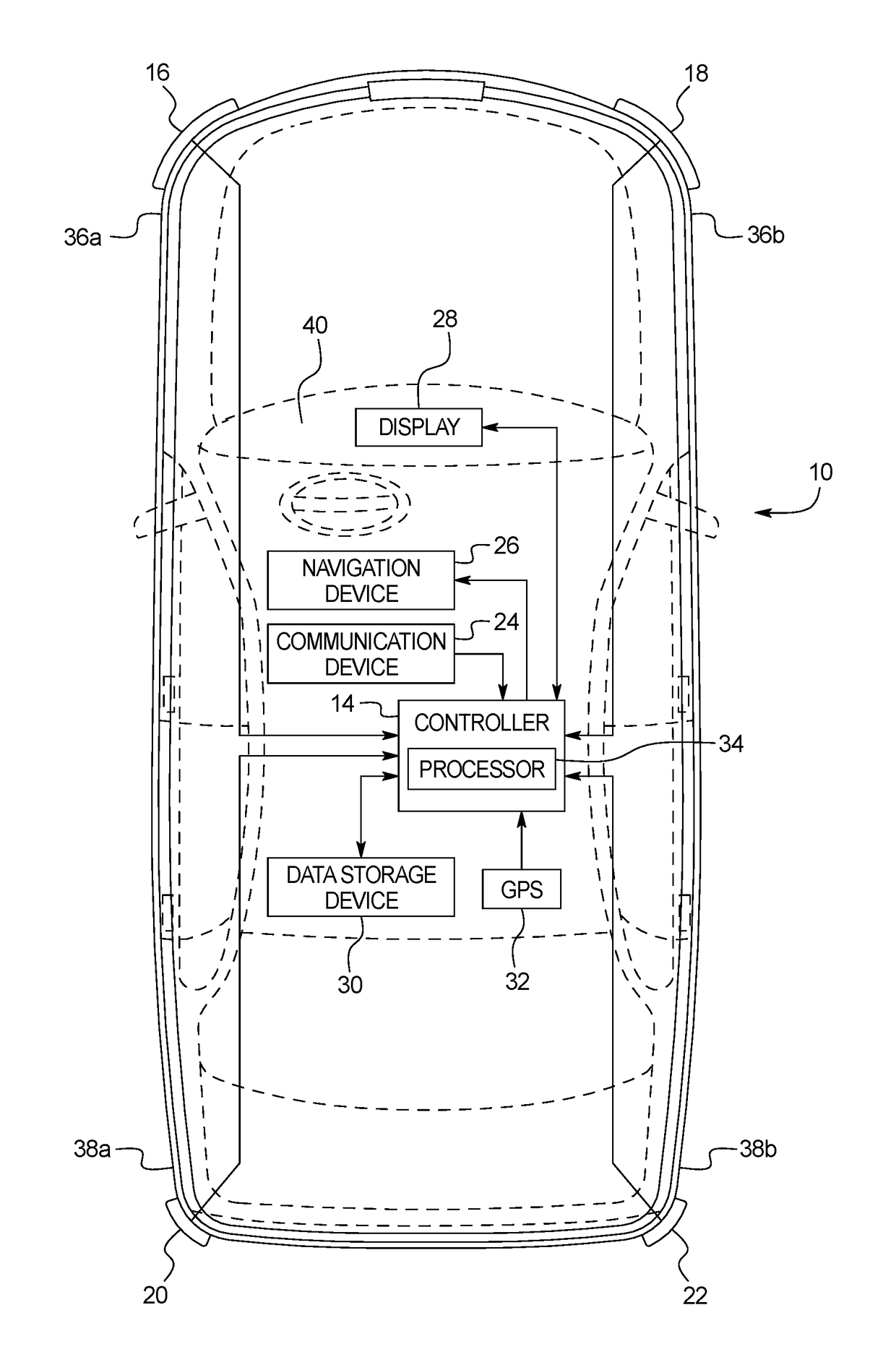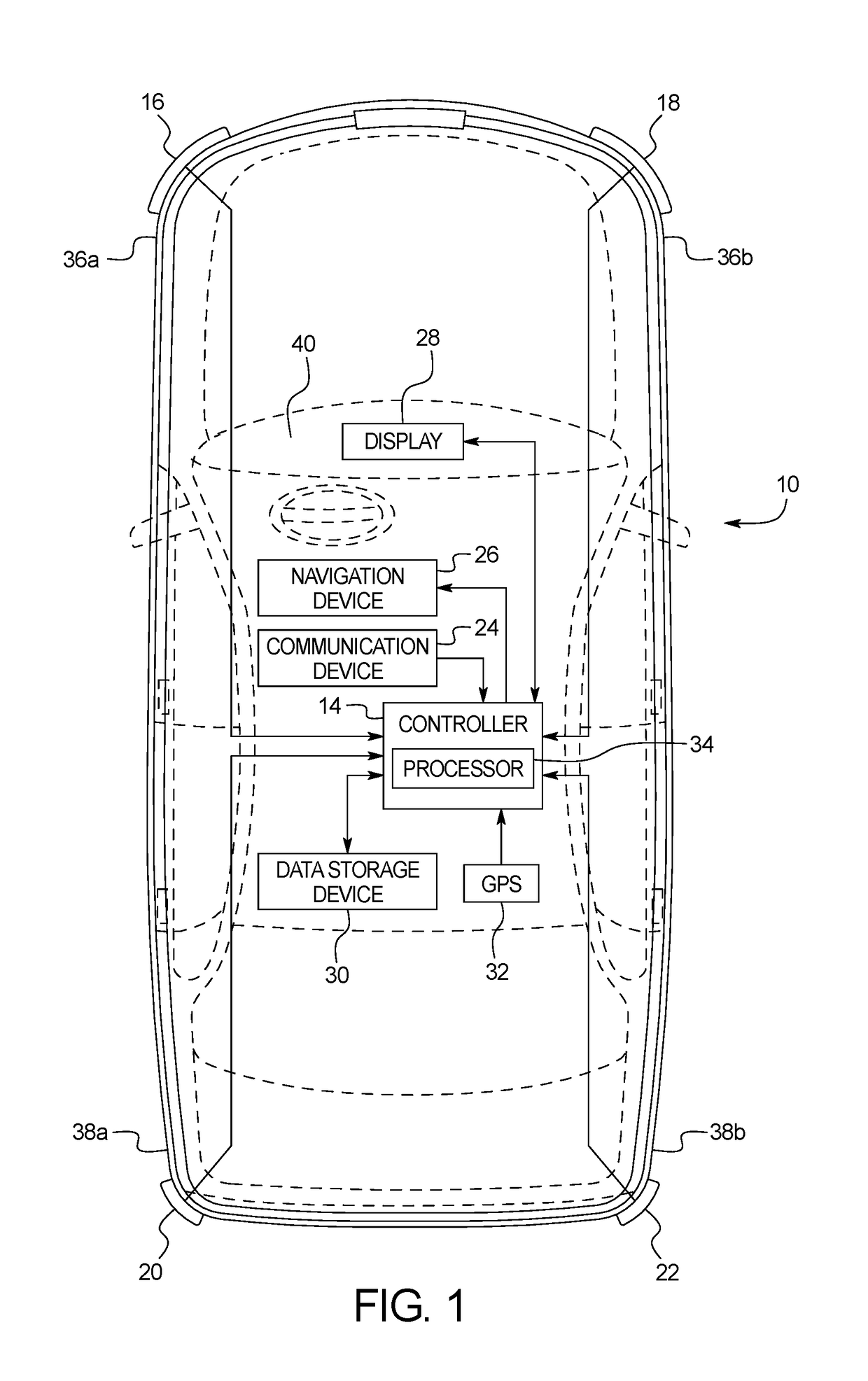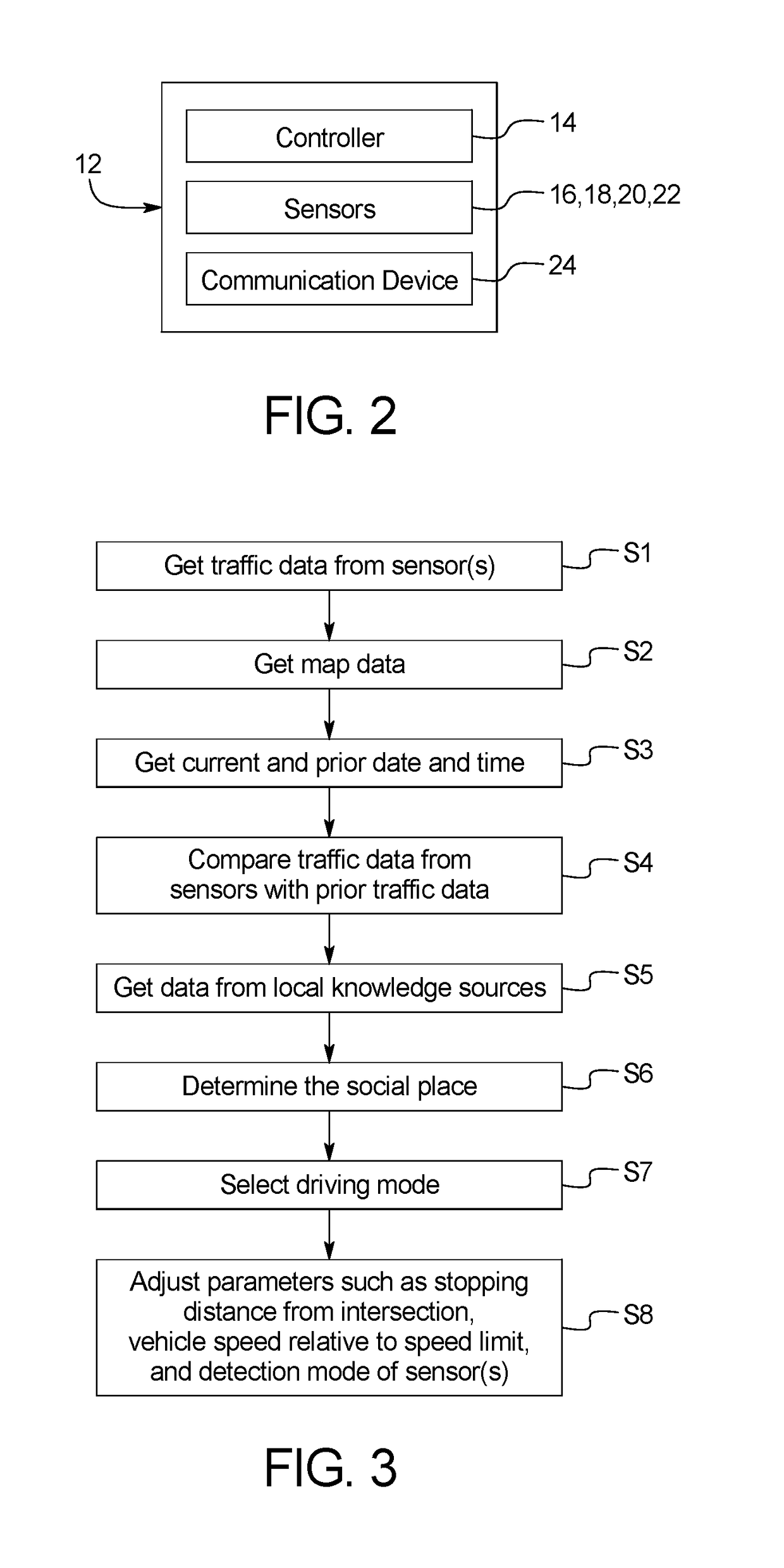Vehicle control system based on social place detection
a control system and vehicle technology, applied in vehicle position/course/altitude control, process and machine control, instruments, etc., can solve the problems of conventional systems limited to merely reacting, not being able to account for local environment conditions, and control systems that do not account for these differences or otherwise have the capability, etc., to achieve socially acceptable driving and higher “social intelligen
- Summary
- Abstract
- Description
- Claims
- Application Information
AI Technical Summary
Benefits of technology
Problems solved by technology
Method used
Image
Examples
Embodiment Construction
[0018]Selected embodiments will now be explained with reference to the drawings. It will be apparent to those skilled in the art from this disclosure that the following descriptions of the embodiments are provided for illustration only and not for the purpose of limiting the invention as defined by the appended claims and their equivalents.
[0019]Referring initially to FIG. 1, a vehicle 10 is illustrated that is equipped with a vehicle control system 12 in accordance with a first embodiment. The vehicle 10 constitutes a host vehicle that is equipped with the vehicle control system 12. Thus, hereinafter, the vehicle 10 will be referred to as the host vehicle 10. The host vehicle 10 is preferably an autonomous vehicle, but can be any suitable vehicle. The vehicle control system 12 has a plurality of predetermined driving modes that control the vehicle based on a detected social place.
[0020]As shown in FIGS. 1 and 2, the vehicle control system 12 includes a controller 14, a pair of fron...
PUM
 Login to View More
Login to View More Abstract
Description
Claims
Application Information
 Login to View More
Login to View More - R&D
- Intellectual Property
- Life Sciences
- Materials
- Tech Scout
- Unparalleled Data Quality
- Higher Quality Content
- 60% Fewer Hallucinations
Browse by: Latest US Patents, China's latest patents, Technical Efficacy Thesaurus, Application Domain, Technology Topic, Popular Technical Reports.
© 2025 PatSnap. All rights reserved.Legal|Privacy policy|Modern Slavery Act Transparency Statement|Sitemap|About US| Contact US: help@patsnap.com



